From April 1 to September 18, 2023, the Peggy Guggenheim Collection presents Edmondo Bacci. The Energy of Light, curated by Chiara Bertola, head of the contemporary art program at the Fondazione Querini Stampalia, Venice. Featuring some 80 works, many of them never before exhibited, including previously unpublished paintings and drawings from theEdmondo Bacci Archive, private collections and international museums, including the Museum of Modern Art in New York and theArt Museum in Palm Springs, this is the first and most comprehensive solo exhibition dedicated to the Venetian artist Edmondo Bacci (Venice, 1913 - 1978). The exhibition is part of the museum’s exhibition tradition, which for years, alongside exhibitions of international scope, has hosted shows aimed at celebrating the protagonists of the national art scene after World War II, such as Lucio Fontana, Giuseppe Capogrossi, Tancredi Parmeggiani, Osvaldo Licini, and now Bacci.
Edmondo Bacci. The Energy of Light intends to delve into the more lyrical side of Bacci’s work at the most international moment of his career, the 1950s, when, already established in exhibition circles linked to Spatialism and among the most innovative at the national level, he was noticed by Peggy Guggenheim and all the novelty of his painting, the generative force of color, the rupture of spatial planes and the circular rhythm of the brushstroke became evident in the eyes of critics.
Bacci is placed within the small circle of artistic excellence in the Veneto region, which also includes Tancredi and Emilio Vedova, who achieved international success and recognition in the same years, and he is undoubtedly one of the few artists on the Italian scene to quickly metabolize the possibilities of a new abstraction, linking contemporary trends from Europe and the United States with a unique style and personal vision. Following this critical path, the exhibition offers a series of works that are fundamental to understanding the evolution of that color-light language that so impressed the American patron as well as Alfred Barr, then director of the Museum of Modern Art in New York, who purchased from the artist Event 13 R, from 1953. The canvas, now part of the New York museum’s collection, returns exceptionally to Italy to be exhibited for the first time to the public.
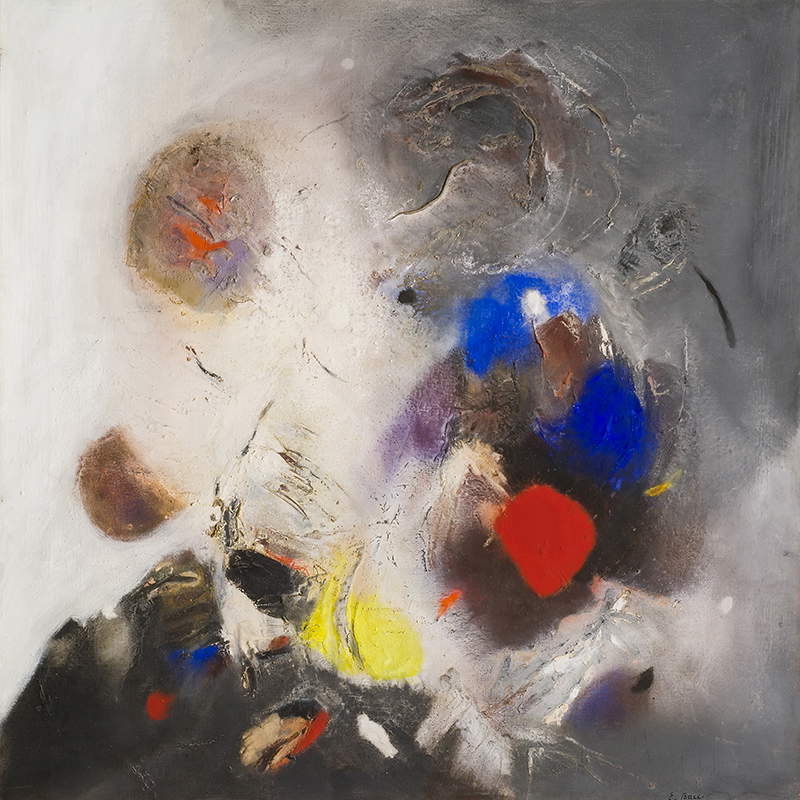
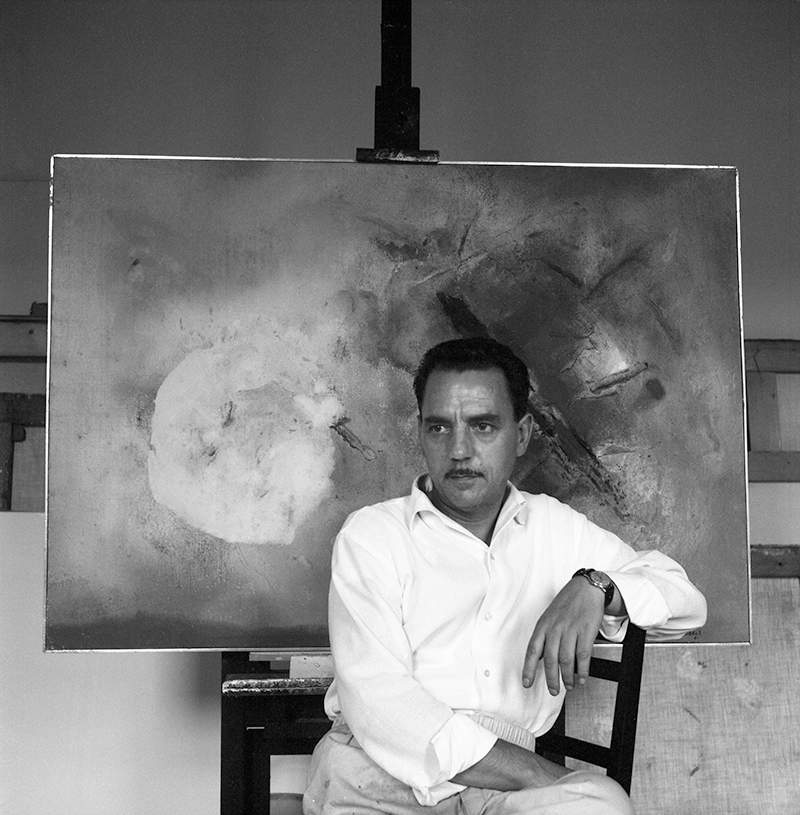
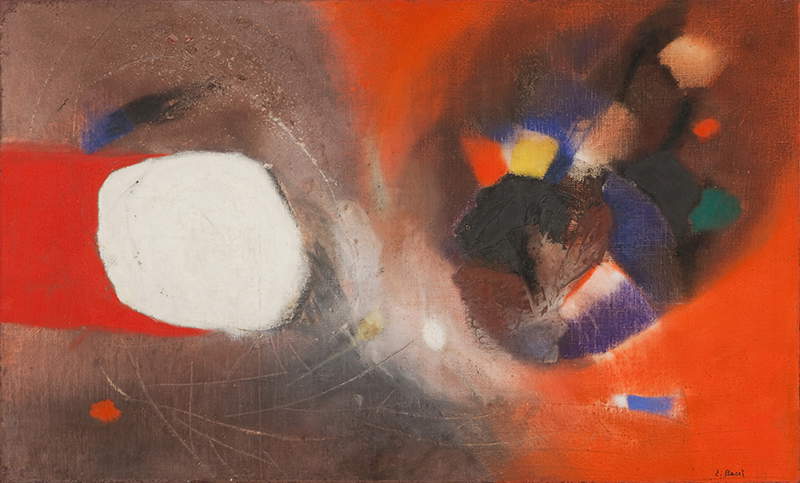
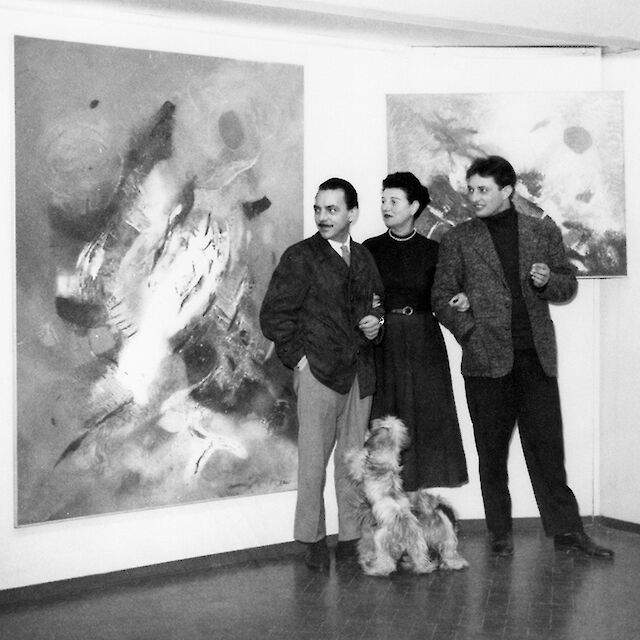
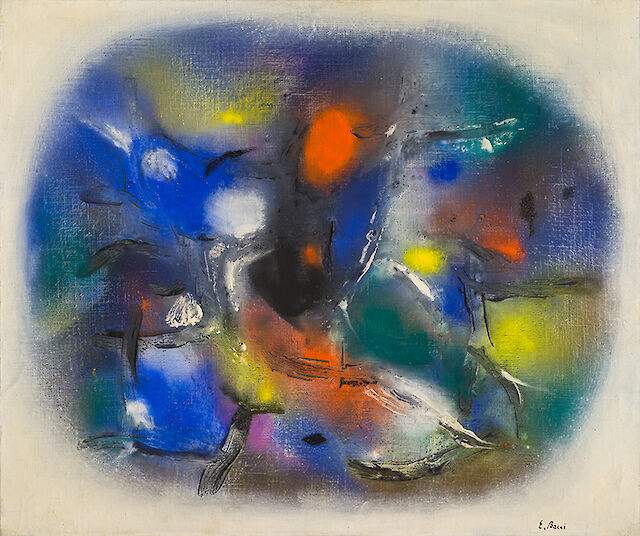
The exhibition begins with the nucleus of canvases, in black and white, titled Cantieri e Fabbriche (Shipyards and Factories), which the artist made between 1945 and 1953, inspired by the blast furnaces of the industrial area of nearby Marghera, and influenced by his contact with the artists of the Fronte Nuovo delle Arti, particularly Vedova and Armando Pizzinato. Bacci excludes color here: the subjects are pictorially resolved through the juxtaposition of only blacks and whites that weave an unpredictable geometry of bumpy movements, rendered by the dynamic alternation of luminous white masses with those of absolute darkness. Between 1952 and 1953 the frontal, black-and-white space of the early Factories undergoes a major structural change, opening up more and more toward significant chromatic values. It is here that what will be the linguistic characteristics of Bacci’s painting begin to be understood and formed: an abstract painting that progressively eliminates the sign to base itself instead, increasingly, on the spatial function of color. This is followed by the Albe, canvases from 1954, characterized by the definitive break in chromatic planes, evidence of the delicate and highly fascinating path of research that led the artist from the Fabbriche to his celebrated Avvenimenti, made during the 1950s and subsequent 1960s, the protagonists of the following rooms. The Advents represent the most poetic, creative and happy core of the artist’s work and the beating heart of the exhibition itself, works where space is no longer supported by a geometric grid but is generated solely by the relationships of color events. A color that becomes absolute space and abolishes all limits between surface and volume, between dimension and trajectory; color becomes pure matter of light in its gradual process of enfranchisement from the heavier matter of the Informal. The exhibition offers an opportunity to admire a series of Happenings that during the 1950s were acquired by several U.S. collectors thanks to the mediation of Guggenheim and Barr, and are now returning to Italy for the first time. Around 1956, in fact, many of the young Bacci’s canvases crossed the ocean, thus opening an important American exhibition period that culminated in his solo show held at the historic Seventy-Five Gallery in New York that same year.
The exhibition then gives space to another interesting, and lesser-known, aspect of the artist’s language: the experimentalism of the 1960s-1970s to which Bacci turned his research in his last years of work. It is here that one encounters his Plaster Casts, Silhouettes, and Little Theaters, all works that reflect Bacci’s incessant artistic research, which in those years pushed towards new extra-pictorial investigations, directed at matter. Alongside these works, an important section is devoted to an unpublished group of drawings and “Burnt Papers,” from various Italian collections and especially from the Edmondo Bacci Archive, where the artist interprets on paper the potentialities proper to the graphic sign and color, deepening his research through a series of works that are apparently dissimilar but all share an evocative-creative force.
The exhibition concludes with a tribute to Bacci’s participation in the XXIX Venice International Art Biennale in 1958. Since his first participation in 1948, the artist has been regularly invited to exhibit at the famous event, but on this occasion an entire room was dedicated to him, now recreated in part in the exhibition at Palazzo Venier dei Leoni with the most famous Happenings of the time, among which is the outstanding Happening #299, from 1958, from the Art Museum of Palm Springs. In the preface to the catalog produced for the Biennale Peggy Guggenheim wrote, “there is a vision in the color, which explodes in all its joyous intoxication...I might suggest Kandinsky for equal poetic power” (Catalog of the XXIX Venice International Art Biennale, 1958). Closing the room will be an astonishing oil on canvas by Giambattista Tiepolo, The Last Judgment (c. 1730-35), from the Intesa Sanpaolo Collection, at the Fondazione Querini Stampalia, Venice, evidence of how, since his artistic training at the Accademia di Belle Arti in Venice, Bacci has been strongly influenced by the great canvases of the past, particularly the luministic colorism of Giovanni Bellini, Giorgione, and especially the spatiality of Tiepolo’s great frescoes and skies.
The exhibition is accompanied by a richly illustrated catalog, published by Marsilio Arte, with essays by curator Chiara Bertola, Martina Manganello, Barry Schwabsky, Toni Toniato, and Riccardo Venturi. Edmondo Bacci. The Energy of Light is made possible thanks to the support of Lavazza Group as Institutional Patron of the Peggy Guggenheim Collection.
For all information, you can visit the official website of the Peggy Guggenheim Collection.
 |
| Venice, at the Guggenheim Collection exhibition on Edmondo Bacci and the power of his color |
Warning: the translation into English of the original Italian article was created using automatic tools. We undertake to review all articles, but we do not guarantee the total absence of inaccuracies in the translation due to the program. You can find the original by clicking on the ITA button. If you find any mistake,please contact us.